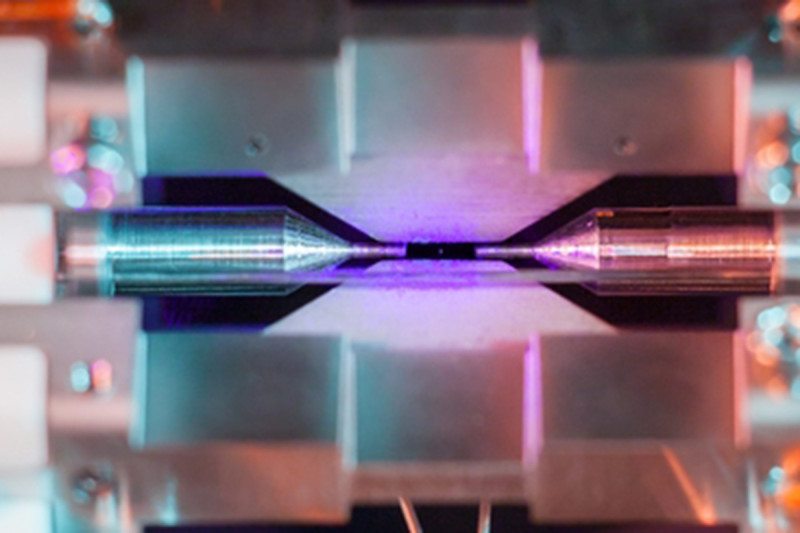Electrodes two millimeters apart trap a single atom. David Nadlinger - University of Oxford
An image of a single atom of the metal strontium suspended in electric fields has won the 2018 Engineering and Physical Sciences Research Council science photography competition.
David Nadlinger‘s photo, Single Atom In An Ion Trap, was captured through the window of a vacuum chamber in an Oxford University laboratory, using an ordinary digital camera on a long exposure shot.
Two metal electrodes, two millimetres apart, held the strontium almost motionless in a strong electric field as it was illuminated with a blue-violet-coloured laser.
“The idea of being able to see a single atom with the naked eye had struck me as a wonderfully direct and visceral bridge between the minuscule quantum world and our macroscopic reality,” Nadlinger said.
“When I set off to the lab with camera and tripods one quiet Sunday afternoon, I was rewarded with this particular picture of a small, pale blue dot,” he said.
The tiny, blue dot is an illuminated strontium atom. David Nadlinger - University of Oxford
Strontium atoms are relatively large, with radii around 215 billionths of a millimeter. The atom is visible in this photograph because it absorbs and re-emits the bright light of the laser.
Extremely still strontium atoms like this one are used in atomic clocks. Each tick of one of these hyper-precise clocks is determined by the frequency of radiation emitted when electrons around an atom change energy states.
Article was originally published on New Scientist.


